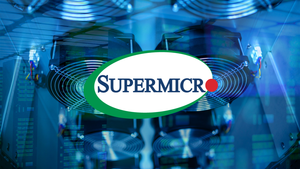
Redmond, WA – September 23, 2025 – Microsoft (NASDAQ: MSFT) today announced a monumental leap forward in addressing the burgeoning heat challenges of artificial intelligence (AI) chips, successfully testing a new in-chip microfluidic cooling system. This groundbreaking innovation, capable of removing heat up to three times more effectively than current cold plate technologies, promises to revolutionize the efficiency and sustainability of next-generation AI hardware by directly flowing liquid coolant inside the silicon. The breakthrough arrives at a critical juncture, as the relentless demand for more powerful AI models pushes existing thermal management solutions to their limits.
This development is poised to redefine the landscape of AI infrastructure, offering a pathway to unlock unprecedented performance from AI accelerators while dramatically reducing the energy and water consumption associated with their operation. By integrating cooling directly into the chip, Microsoft is not only solving an immediate technical bottleneck but also laying the groundwork for future advancements in chip architecture, such as 3D stacking, that were previously deemed thermally unfeasible.
In-Chip Cooling: What Happened and Why It Matters
Microsoft's pioneering in-chip microfluidic cooling system represents a paradigm shift in thermal management for high-performance computing. The system integrates hair-thin channels directly onto the back of the silicon chip, allowing liquid coolant to flow precisely where heat is generated. This direct-to-silicon approach, developed in collaboration with Swiss startup Corintis, bypasses the multiple insulating layers inherent in traditional cooling methods, leading to vastly superior heat removal. Lab-scale tests have demonstrated that this system can remove heat up to three times more effectively than advanced cold plate technologies, while reducing the maximum temperature rise within a GPU by up to 65% depending on workload.
The significance of this achievement cannot be overstated. Modern AI chips, particularly Graphics Processing Units (GPUs) and Tensor Processing Units (TPUs), generate immense amounts of heat, threatening their performance, longevity, and the overall efficiency of data centers. Current cold plate solutions are rapidly approaching their thermal limits, necessitating a radical new approach. Microsoft's microfluidic system directly targets "hot spots" on the chips, allowing them to operate at higher temperatures (up to 70°C or 158°F) without experiencing performance-degrading thermal throttling. This not only boosts sustained performance, potentially enabling techniques like overclocking during peak demand, but also paves the way for advanced chip architectures like 3D stacking, which have been hampered by extreme heat generation. The ability to cool between stacked layers of silicon could dramatically reduce latency and increase processing power in a much smaller footprint, fundamentally altering chip design.
A Cooler Future: How This Might Affect the Market
The introduction of Microsoft's (NASDAQ: MSFT) in-chip microfluidic cooling system is set to send ripples across the financial markets, creating distinct winners and losers within the technology and infrastructure sectors. This innovation directly addresses one of the most pressing challenges in AI hardware, and its implications will be felt from chip manufacturers to data center operators.
Potential Winners:
- Microsoft (NASDAQ: MSFT): As the innovator and first mover, Microsoft stands to gain a significant competitive advantage. By integrating this technology into its custom AI chips, such as the Cobalt CPU and Maia AI Accelerator, Microsoft can offer superior, more efficient AI infrastructure for its Azure cloud services and internal operations. This could attract more enterprise customers seeking high-performance, sustainable AI solutions, strengthening its position against rivals like Amazon (NASDAQ: AMZN) Web Services and Alphabet's (NASDAQ: GOOGL) Google Cloud.
- AI Chip Manufacturers (Adopters): Other leading AI chip manufacturers, including Nvidia (NASDAQ: NVDA), Advanced Micro Devices (NASDAQ: AMD), and potentially even Intel (NASDAQ: INTC), who either license or develop similar in-chip cooling solutions, could see substantial benefits. The ability to manage heat more effectively will allow them to design even more powerful and densely packed chips, extending their product roadmaps and maintaining market leadership in an increasingly competitive landscape. Collaborations, similar to Microsoft's with Corintis, could become a key strategy for these companies.
- Specialized Cooling Solution Providers: Companies that specialize in the materials, manufacturing processes (e.g., advanced etching for microchannels), and specialized coolants required for in-chip microfluidics will likely see a surge in demand. Startups like Corintis, which partnered with Microsoft on the bio-inspired channel designs, are positioned to become crucial suppliers and innovators in this niche but rapidly growing segment.
- Edge AI and Hyperscale Data Center Developers: The ability to pack more computing power into smaller, more energy-efficient spaces will accelerate the deployment of edge AI computing, bringing AI closer to data sources. Hyperscale data centers will also benefit from increased density and reduced operational costs, enabling further expansion and more efficient utilization of real estate.
Potential Losers:
- Traditional Cooling Solution Providers: Companies heavily reliant on older air-cooling or less efficient cold plate systems, such such as Vertiv (NYSE: VRT), may face significant pressure. Reports of Vertiv's shares declining after Microsoft's announcement underscore market concerns about the potential disruption this advanced technology could bring to their existing business models. These companies will need to rapidly innovate and adapt to liquid-based, direct-to-chip cooling solutions to remain competitive. The entire supply chain for air-cooling components could see reduced demand over time.
Broader Implications: Reshaping the AI and Data Center Landscape
Microsoft's microfluidic cooling system is more than just a technical upgrade; it represents a foundational shift with profound implications for the broader AI industry, data center design, and the global push for sustainability. This innovation fits squarely into a broader trend of increasing computational density and the urgent need for more energy-efficient computing.
Firstly, the ability to manage heat within the silicon itself will lead to a dramatic increase in data center density. More powerful chips can be packed into smaller physical footprints, reducing the need for sprawling data centers and optimizing real estate utilization. This will have a ripple effect on data center construction, potentially favoring modular designs and smaller, more localized facilities that can be deployed closer to end-users for edge computing. Secondly, it accelerates the industry's inevitable transition away from traditional air-cooling towards more efficient liquid-based, direct-to-chip, and ultimately, immersion cooling strategies. This shift is not merely about efficiency but also about future-proofing infrastructure against the escalating thermal demands of increasingly powerful AI models.
From a regulatory and policy perspective, this technology aligns perfectly with growing global pressures for environmental sustainability. Data centers are notorious for their massive energy and water consumption. Microsoft's system is projected to significantly improve Power Usage Effectiveness (PUE) and reduce overall cooling energy consumption from approximately 40% to 20-25% of total data center energy use. Furthermore, it aims to reduce greenhouse gas emissions by 15% and lower water consumption by up to half compared to traditional methods. This commitment to water efficiency, exemplified by Microsoft's goal to achieve water-positive operations by 2030, sets a new benchmark for the industry and could influence future environmental regulations and corporate sustainability mandates. Historically, similar breakthroughs in efficiency, such as advancements in processor architecture or power supply units, have always driven subsequent waves of innovation and industry consolidation, and this cooling breakthrough is likely to follow a similar trajectory.
What to Pay Attention to Next
The unveiling of Microsoft's (NASDAQ: MSFT) in-chip microfluidic cooling system marks the beginning, not the end, of a new era in AI hardware. For industry observers and investors, several key areas warrant close attention in the coming months and years, as the short-term and long-term possibilities unfold.
In the short-term, watch for announcements from other major AI chip manufacturers, such as Nvidia (NASDAQ: NVDA) and Advanced Micro Devices (NASDAQ: AMD), regarding their own advanced cooling roadmaps. Will they pursue similar in-chip solutions, or will they explore alternative high-efficiency liquid cooling methods? Strategic partnerships, similar to Microsoft's collaboration with Corintis, will be crucial. Also, observe the initial deployment and scaling of this technology within Microsoft's Azure data centers. Real-world performance metrics, energy savings, and reliability data will provide critical validation and shape market perception. The immediate impact on the stock prices of traditional cooling providers versus innovative liquid cooling specialists will offer early indicators of market sentiment.
In the long-term, the most significant strategic pivot will be in chip architecture design. The thermal constraints that have limited 3D stacking and other advanced packaging technologies are now being challenged. Look for announcements from chip designers about new architectures that leverage this enhanced cooling capability to achieve unprecedented levels of integration and performance. This could lead to a new generation of AI accelerators that are vastly more powerful and compact. Furthermore, the industry will need to adapt to new manufacturing processes and supply chains for these advanced cooling components. Market opportunities will emerge for companies specializing in microfabrication, advanced materials, and specialized coolants. Potential scenarios include a rapid industry-wide adoption driven by competitive pressure, or a more gradual transition as existing infrastructure is slowly phased out. Regulatory bodies may also begin to set new efficiency standards for data centers, further accelerating the adoption of such technologies.
Conclusion: A Cooler, Greener Future for AI
Microsoft's (NASDAQ: MSFT) successful test of its in-chip microfluidic cooling system is a pivotal moment for the technology industry. It addresses one of the most pressing challenges facing the exponential growth of artificial intelligence: heat generation. By directly integrating cooling into the silicon, Microsoft has not only demonstrated a pathway to unlock higher performance from next-generation AI chips but has also made a significant stride towards more sustainable and energy-efficient computing infrastructure.
The key takeaways from this event are clear: thermal management is now a primary driver of innovation in AI hardware, and liquid cooling, particularly direct-to-chip solutions, is the future. The market will likely see a reshuffling of players, with those embracing advanced cooling technologies gaining a competitive edge, while those clinging to older methods face increasing pressure. For investors, this means closely monitoring the R&D efforts and strategic partnerships of chip manufacturers, data center operators, and specialized cooling solution providers. The coming months will reveal how quickly the industry adapts to this new reality, but one thing is certain: the future of AI is looking a whole lot cooler, and greener.





